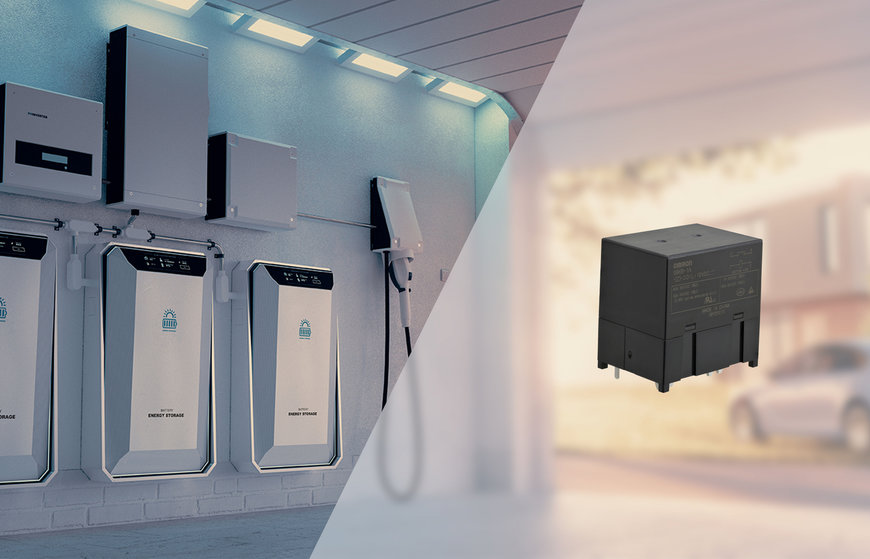smartbuildingmag.com
22
'22
Written on Modified on
Omron Components News
OMRON introduces a bi-directional DC power relay specifically for next generation of home renewable energy systems
Omron DMS Europe has launched the first product as part of its new organisation-wide focus on tackling the challenges of climate change and, specifically, helping to drive the change to net zero emission fuels.

The new device – the Omron G9KB – is a PCB power relay that provides bi-directional high power DC switching for the next generation of renewable battery energy storage systems (BESS) for homes and DC wall boxes for electric vehicles (EVs). It can replace two standard uni-directional relays in this type of application.
The market for domestic-scale renewable energy generation systems is transitioning from a feed-in tariff (FIT) model where unused ("redundant") energy from solar panels is fed into the electricity grid, to a self-consumption or larger-scale energy storage system (ESS) that reduces grid dependency and makes it easier to make the most of low or zero emissions power.
"This new relay is part of our response to the next stage of the renewable energy market, which will need reliable and safe switching between charging and discharging power from storage devices. The G9KB bi-directional relay can be used within a power conditioner to ensure stable power output from a battery, and it will be particularly beneficial for domestic-scale renewable energy systems: for example, where electricity from solar panels is being used to charge an electric vehicle," Steve Drumm, Strategic Marketing Manager at Omron said.
The G9KB (DC 600V/50A) features Omron's arc cut off technology (CAE) that 'stretches' the arc using the magnetic force of a permanent magnet placed near the contact point. This makes the relay suitable for next generation vehicle to home (V2H) and vehicle to grid (V2G) charger systems. In a V2H system, the relay enables an EV battery to be used as a source of power for a household electricity system when the solar panels are not generating power; whereas in a V2G system the stored energy can be exported to the grid.
www.omron.com

